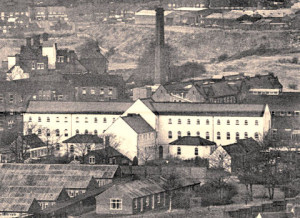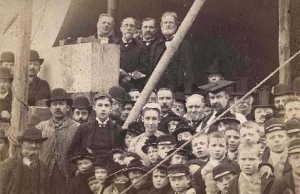Maud Clarke (b. 1887): Life and Labour
‘It opened at six o’clock in the morning, and stayed often without a break, until eleven o’clock at night.’ (Maud Clarke, p. 17)
Long working hours and heavy graft became common for families at the start of the nineteenth century, which really kick started the beginning of the Industrial Revolution. Maud writes in her memoir that her own family was no exception, with her Father working two jobs in order to support his growing family. His profession was a plumber and shopkeeper, and he often worked around the clock, to enable her family to be ‘comfortably off.’ As mentioned previously, since Maud talks little about her Father, we can presume that due to his hardworking nature and the need to make money, he was often absent from the family home, not seeing his children for long periods of time.

The 19th century working-class were the victims of little to no leisure time, usually just earning enough money to survive, by working in professions which mainly included hard labour so that they were able to avoid the dreaded workhouses. Yet opportunities for work were not unheard of; ‘in both agriculture, domestic industry and the many non-industrialised urban occupations, there were still many opportunities,’ (Alexander, 1983) and her Father indeed proved this to be true.
Maud strikes me as being incredibly lucky; some children were forced to drop out of education to fulfil their parents need for work, yet Maud and her siblings were fortunate enough to be able to complete their schooling in full. She did express her Mother’s hope that she would leave school at thirteen for her domestic assistance; ‘my Mother desires it [that she leave school] so that I may help her as she has just acquired her last baby.’ (Clarke, p. 24) They indeed helped their parents at work when they were not in school, especially when her Father purchases the alehouse where they were to set up home in 1897; ‘My brother and I take a large jug each to another alehouse,’ (Clarke, p. 19). Fortunately for Maud, working at home did not prevent her from completing her education, as we can see by looking at her teaching career.

Maud writes lovingly about her journey into teaching and the best years that she spent inspiring and helping young children to read, write and count. Her persistence in joining the profession was amazing to read about when we consider that women were usually viewed as homemakers. She details how she did work experience with her Father; ‘our Father had to undertake to care for us – a kind of apprenticeship which was signed in the presence of the School Board.’ (Clarke, p. 26) Again this is strikingly similar to my own journey – having done work experience with my Father, an engineer, in my last year of school, which was also signed off by my school.
Labour was a source of independence to the workers, and whilst Maud’s profession was not necessarily classed as ‘labour,’ she reflects on how her independence has flourished since beginning to earn her own money; ‘My salary now at 18, was approximately 15 cents a week. It felt grand.’ (Clarke, p. 27) Yet she does write about gender inequality in training and pay in the teaching profession pay, something which I myself, and Maud disagree on wholeheartedly; ‘some male teachers borrowed the cost of study at college.’ (Clarke, p. 27)
To conclude, the stigma of labour was a hard one to move away from in Maud’s time, as money needed to be made, and therefore labour needed to be grafted. The detail that she writes about regarding her Father’s and her own profession indicates to me that her family imposed upon her the values of hard work, and this was something that she carried on into her own adult life, and presumably to her own children.
Works Cited:
Alexander, S. (1983) Women’s work in nineteenth-century London: A study of the years 1820-50. London: Journeyman Press and London History Workshop Centre, London.
Clarke, Maud. ‘Untitled.’ pp.67, Brunel University Library. (1978)
Gomersall, Meg. Working-Class Girls in Nineteenth-Century England: Life, Work, and Schooling. Basingstoke: Macmillan, 1997
Images Cited:
[1] http://www.workhouses.org.uk/Dudley/
[2] http://www.birminghammail.co.uk/news/local-news/forgotten-faces-of-the-warwickshire-workhouse-kids-225544

Leave a Reply